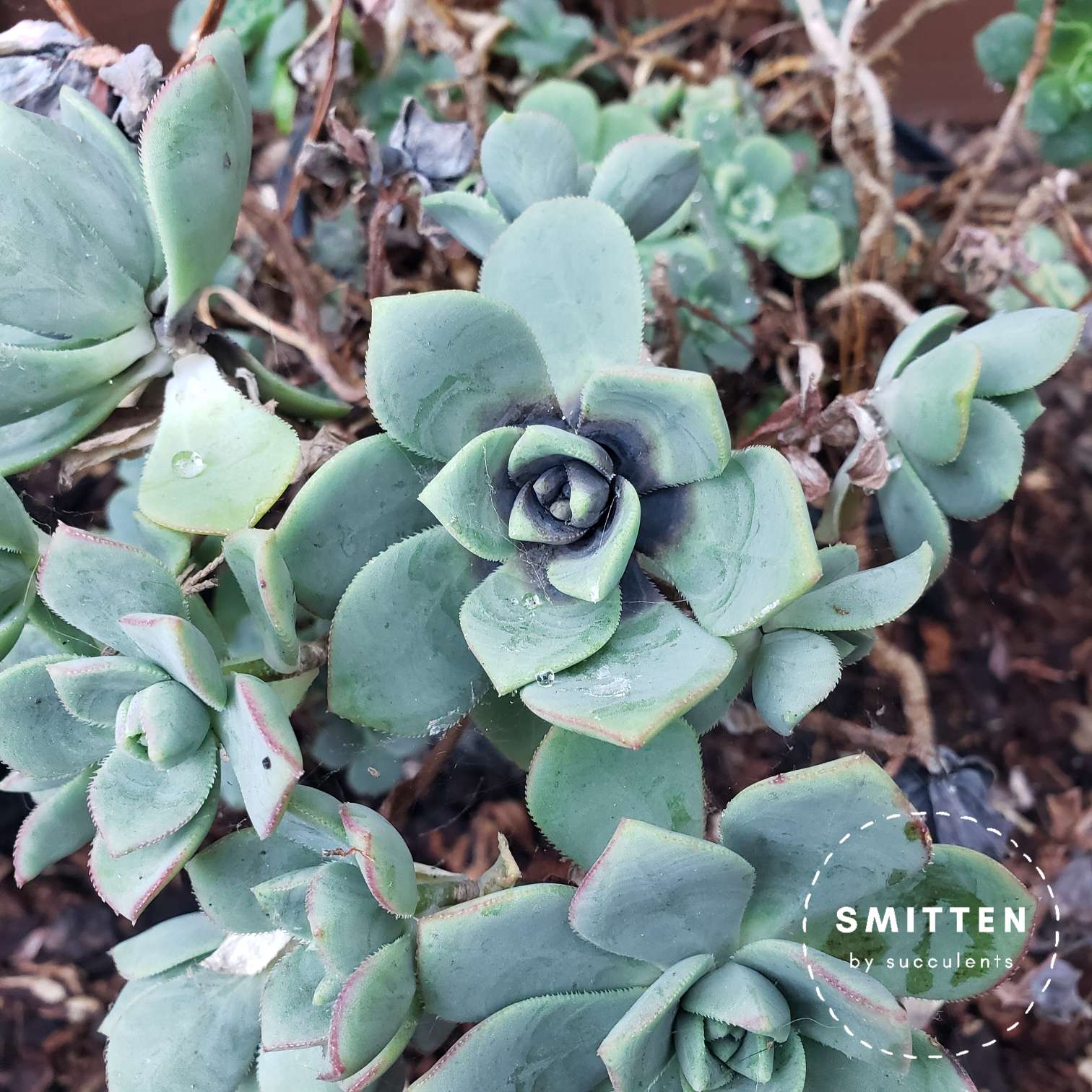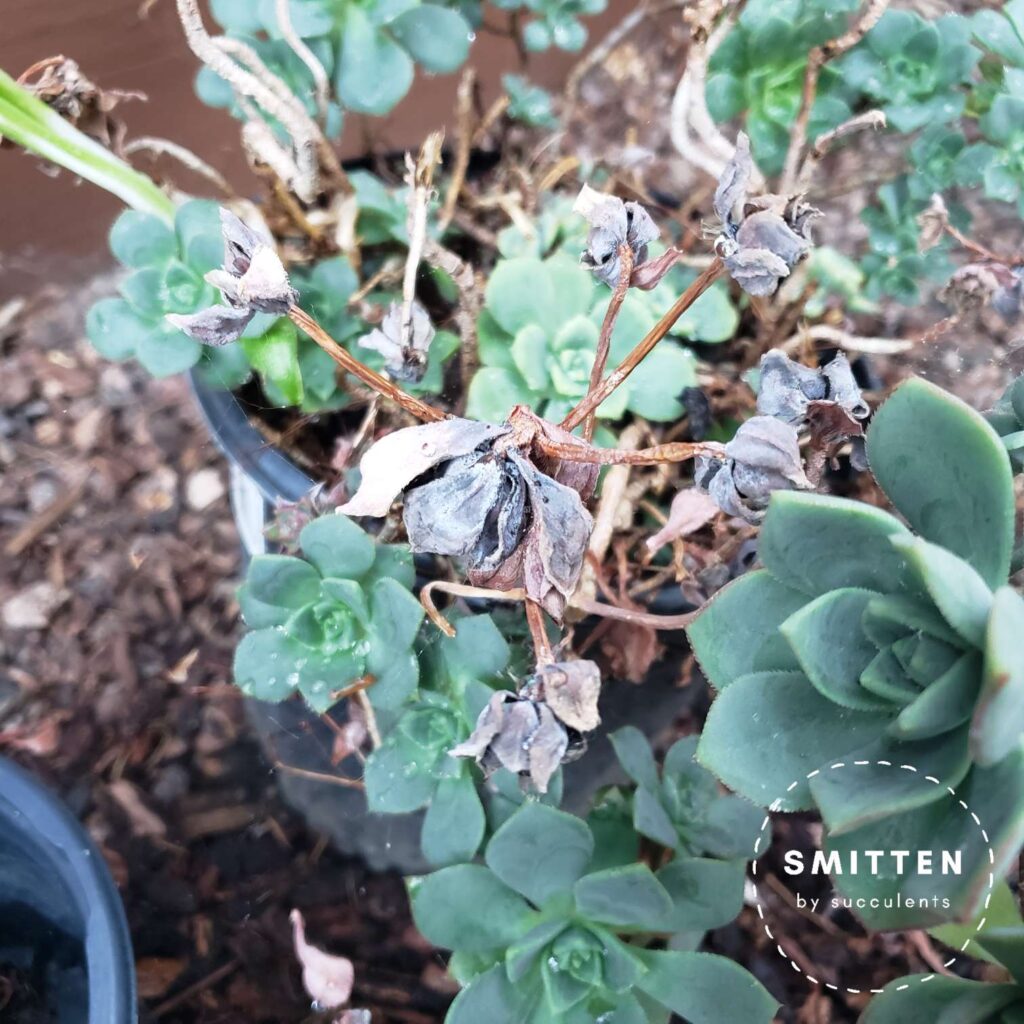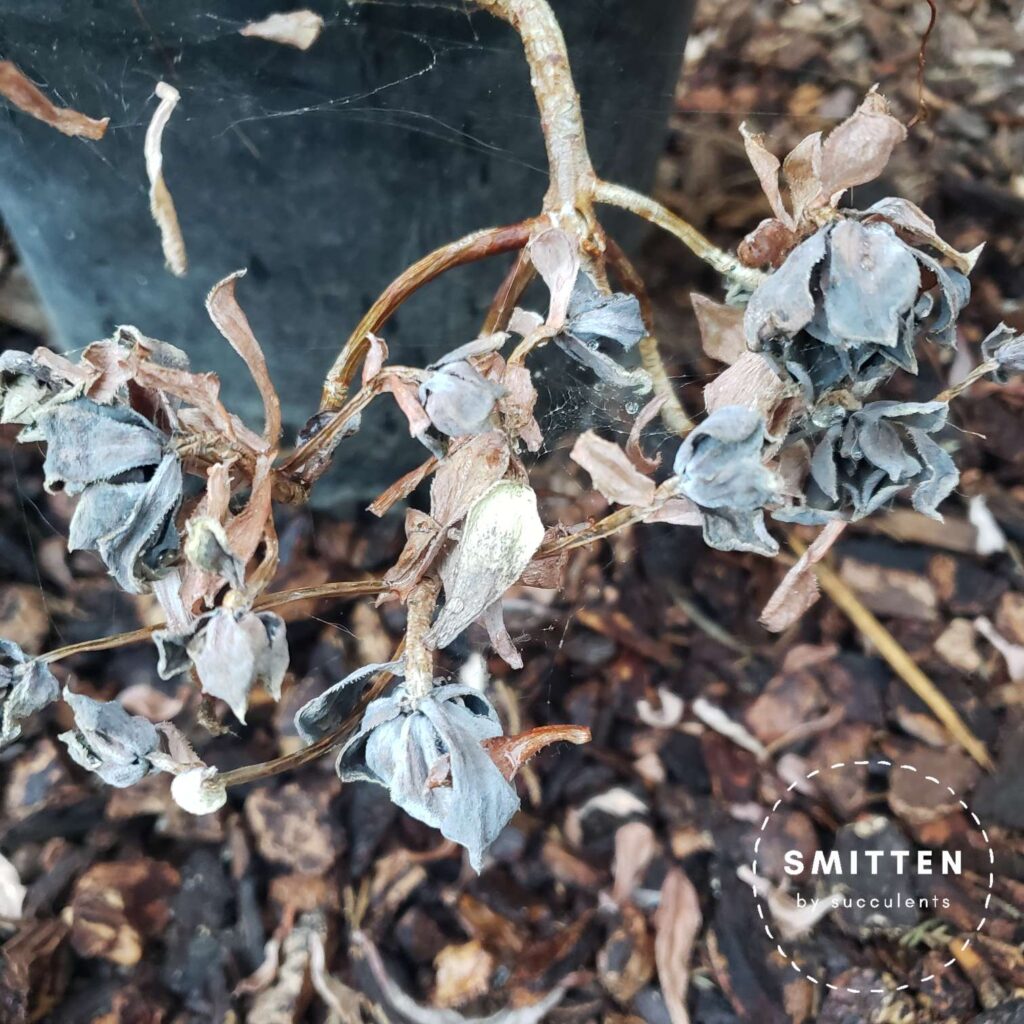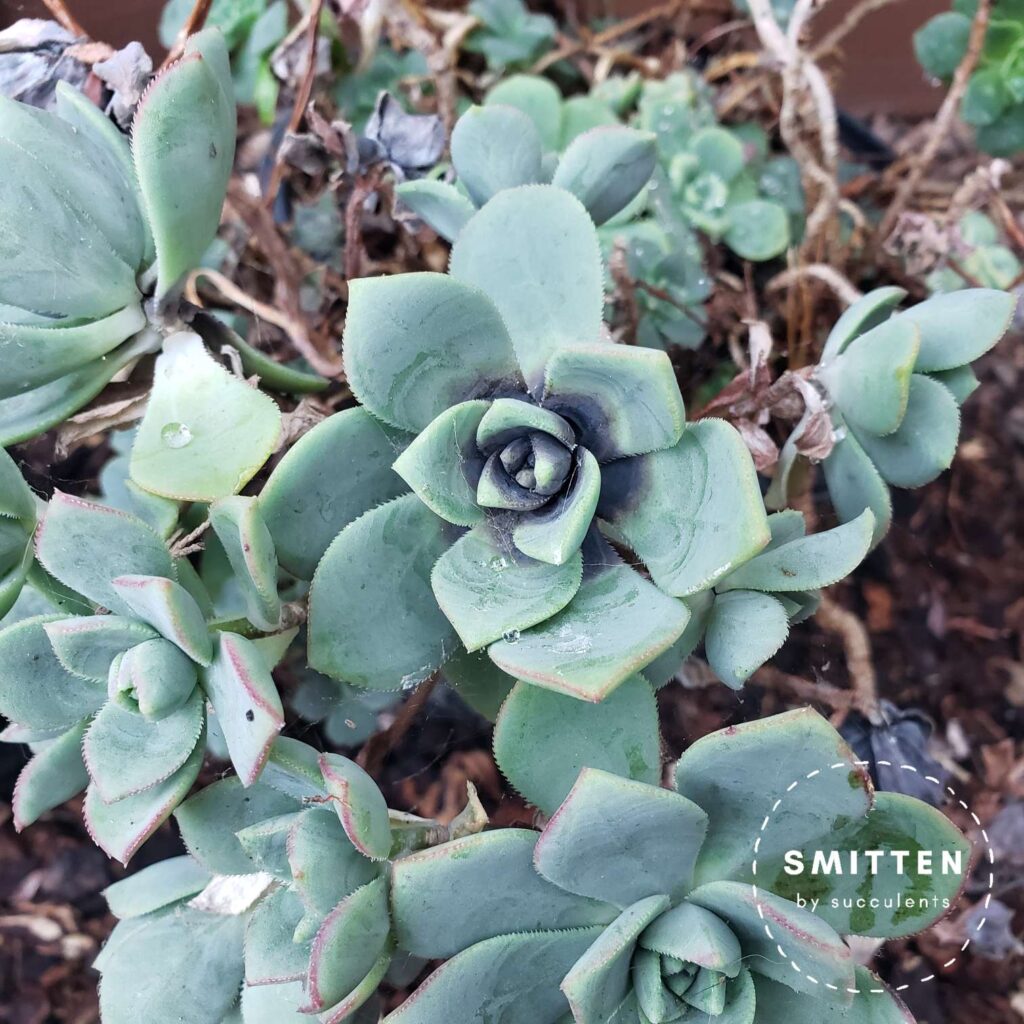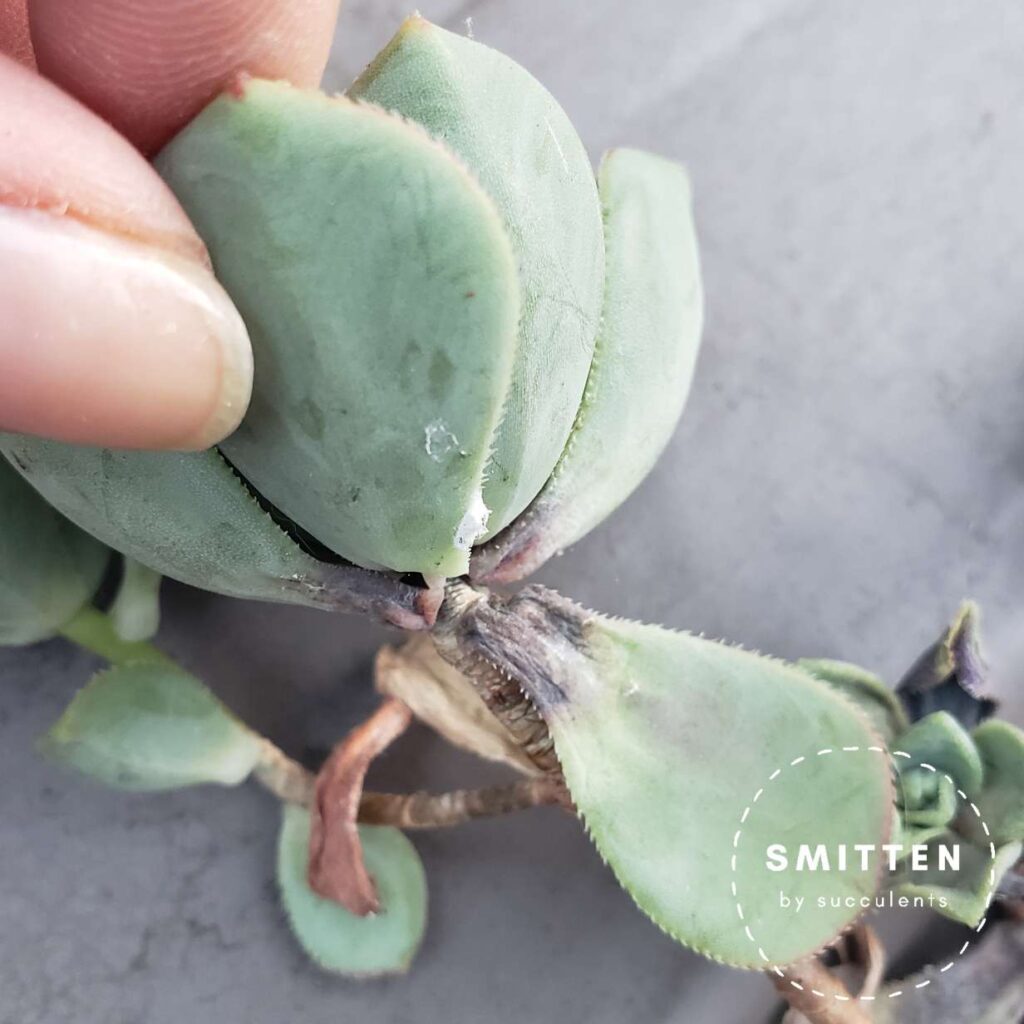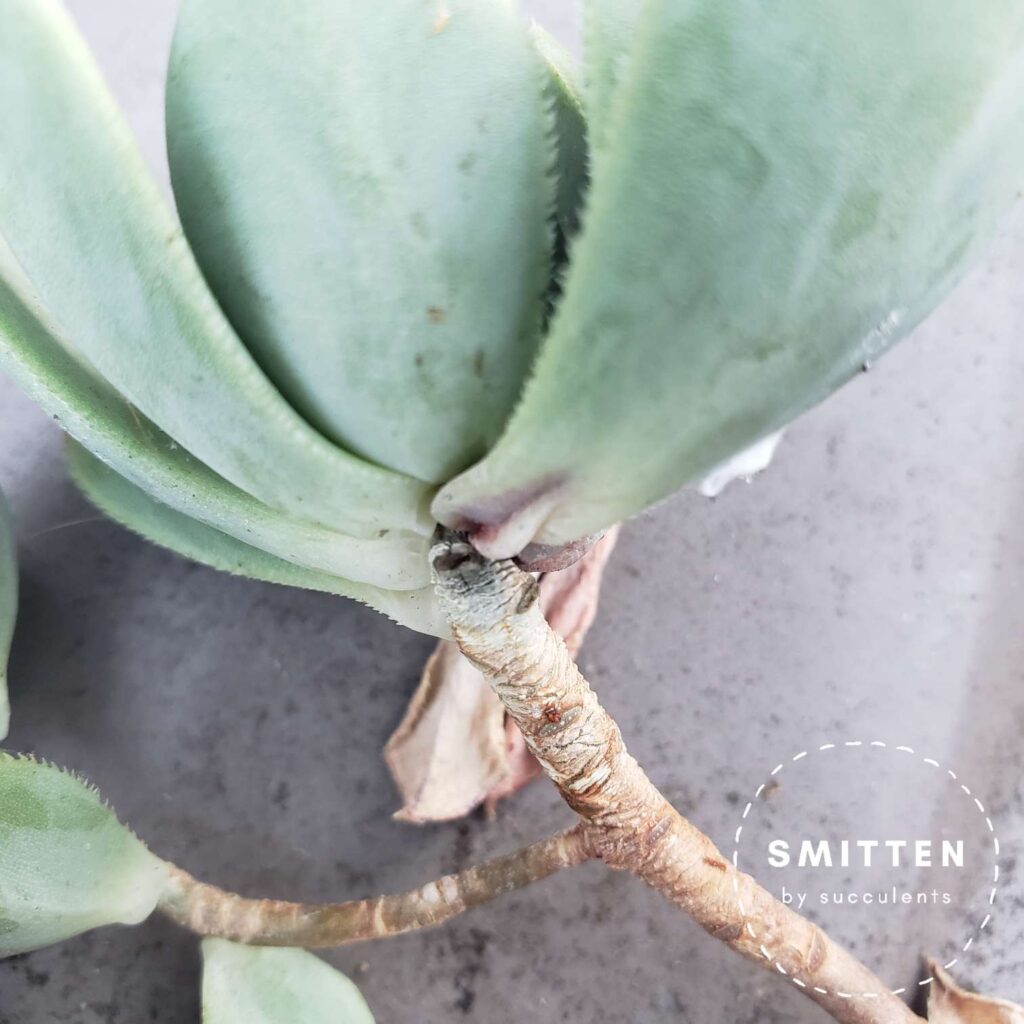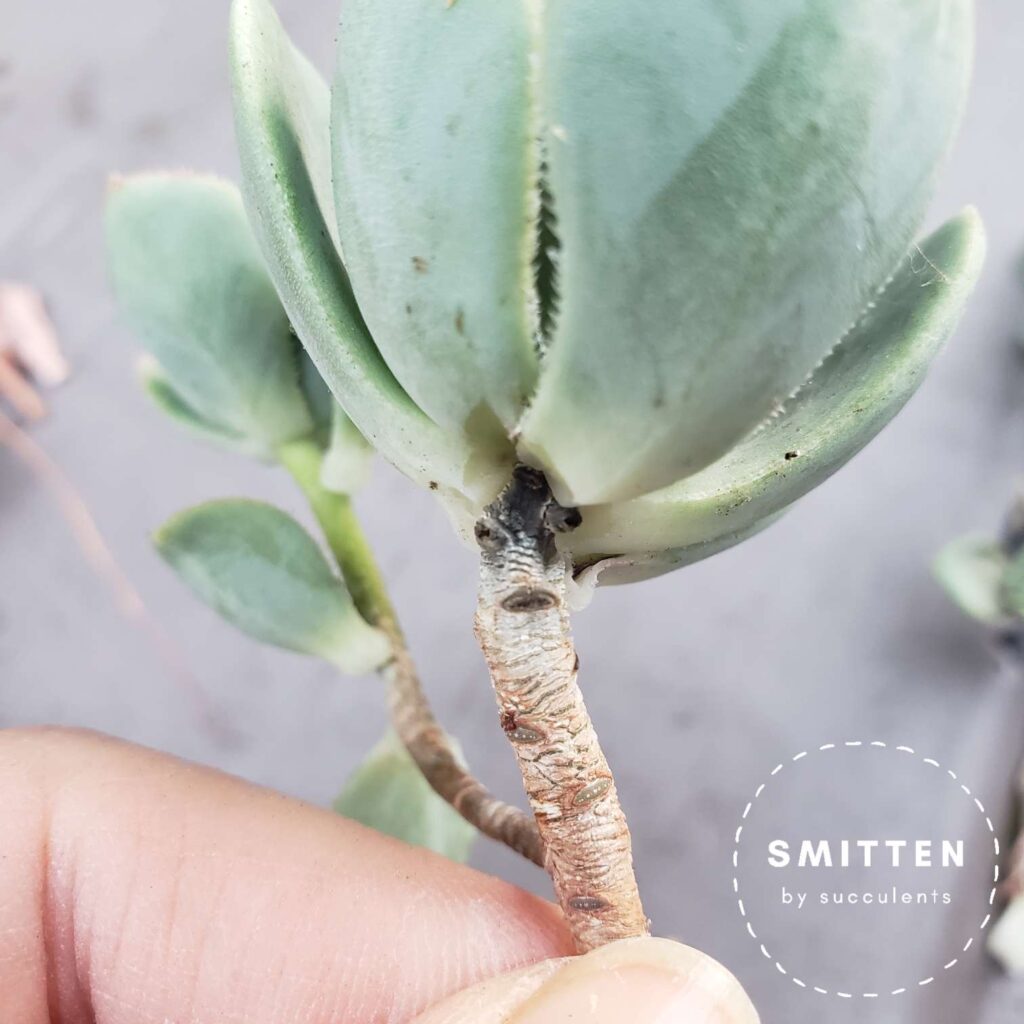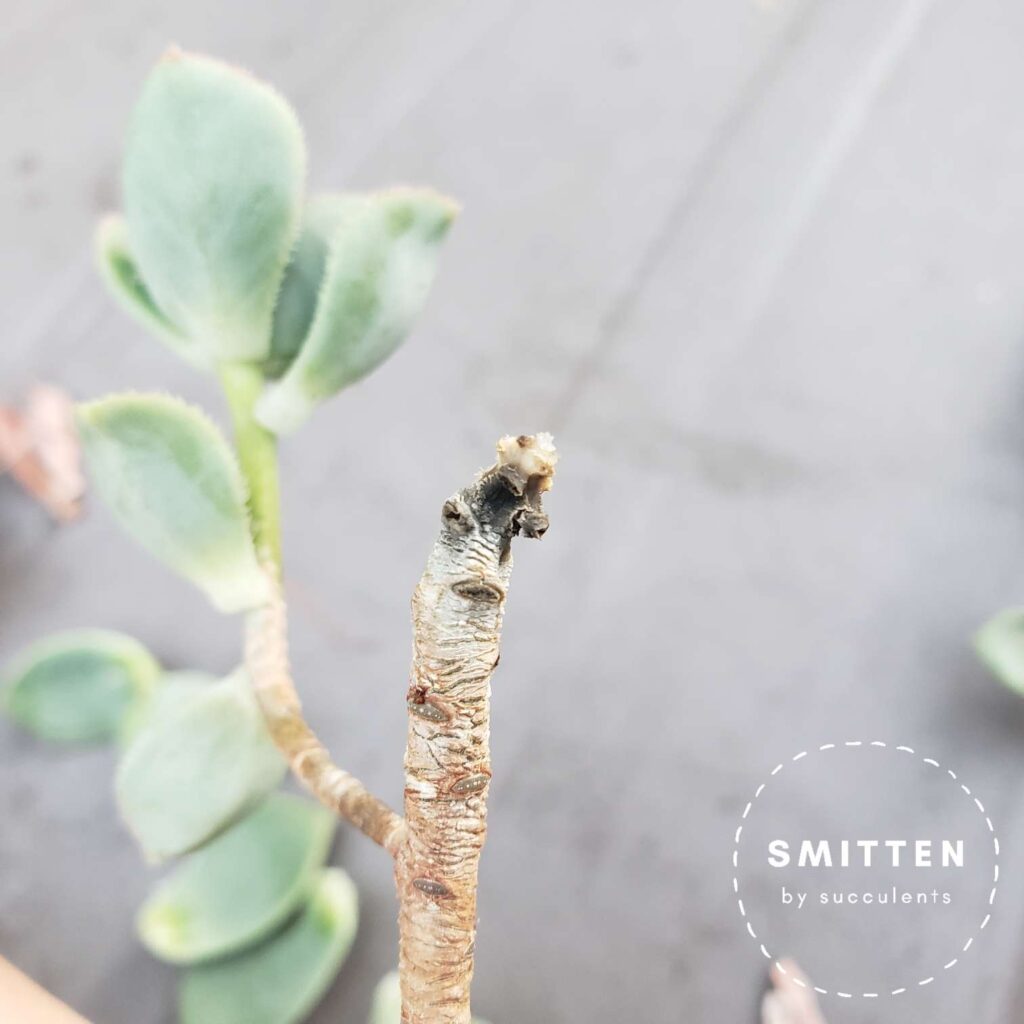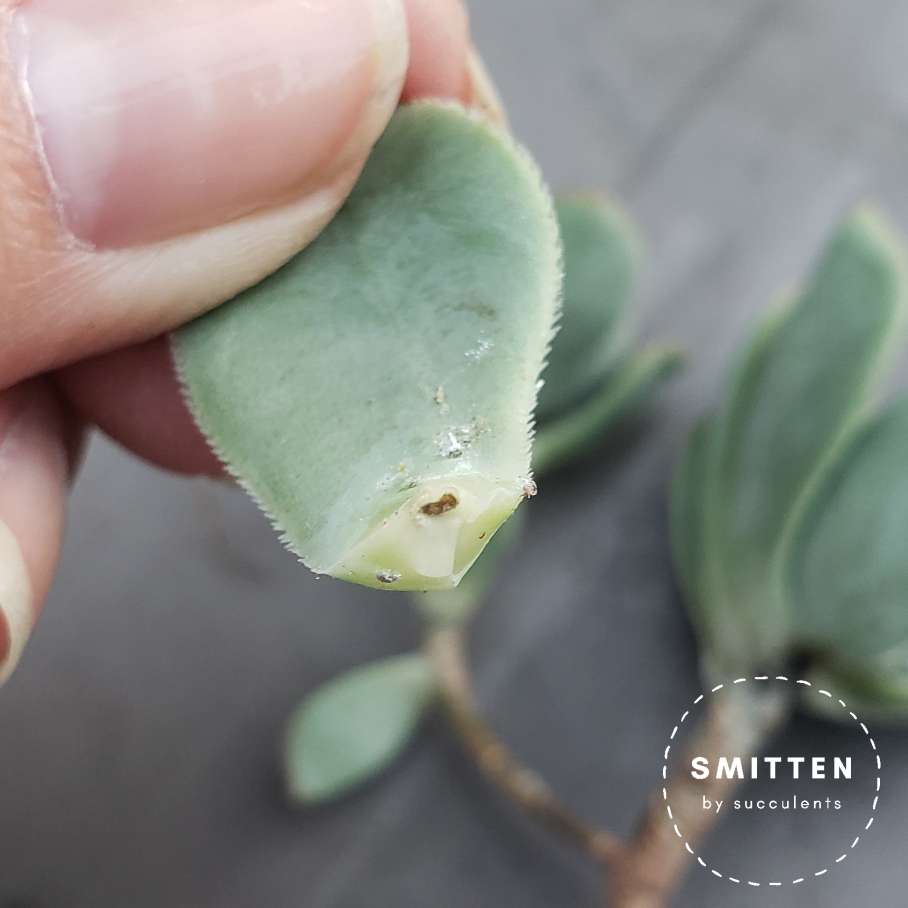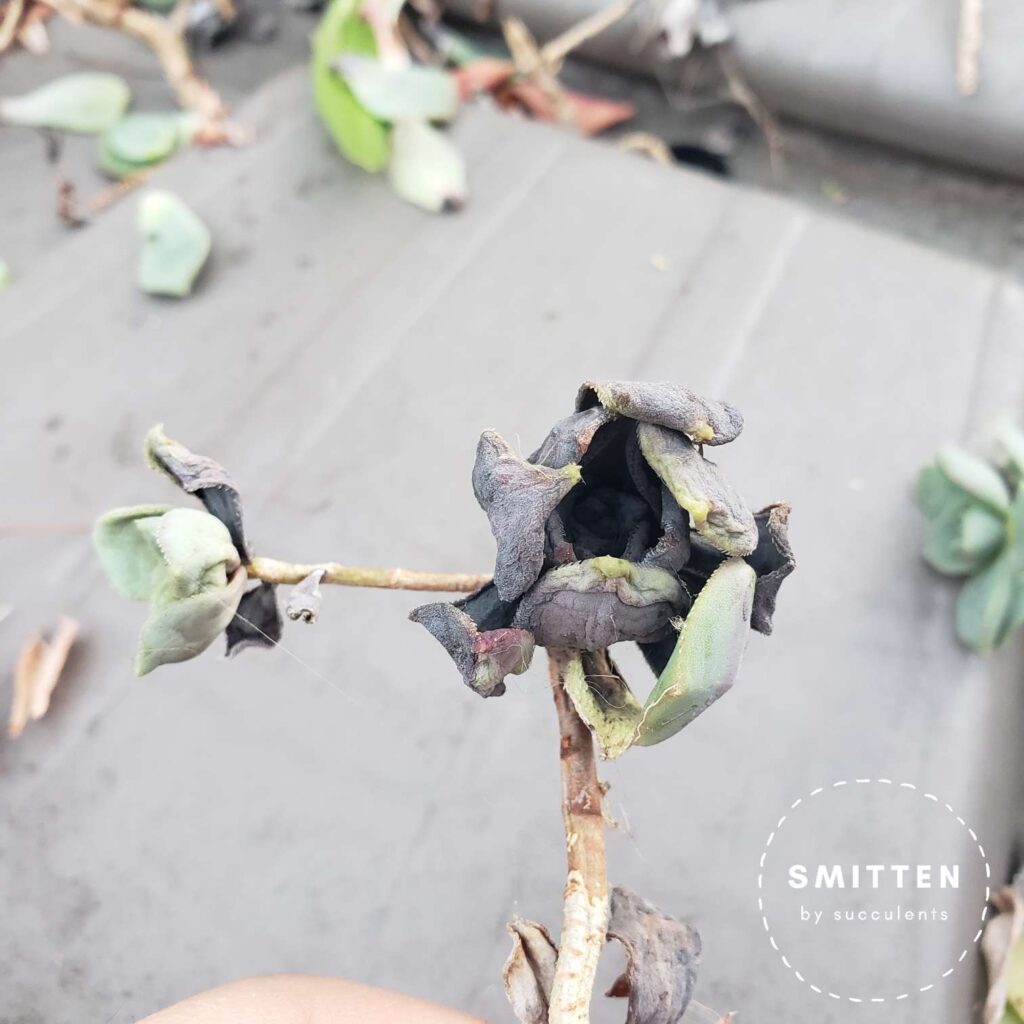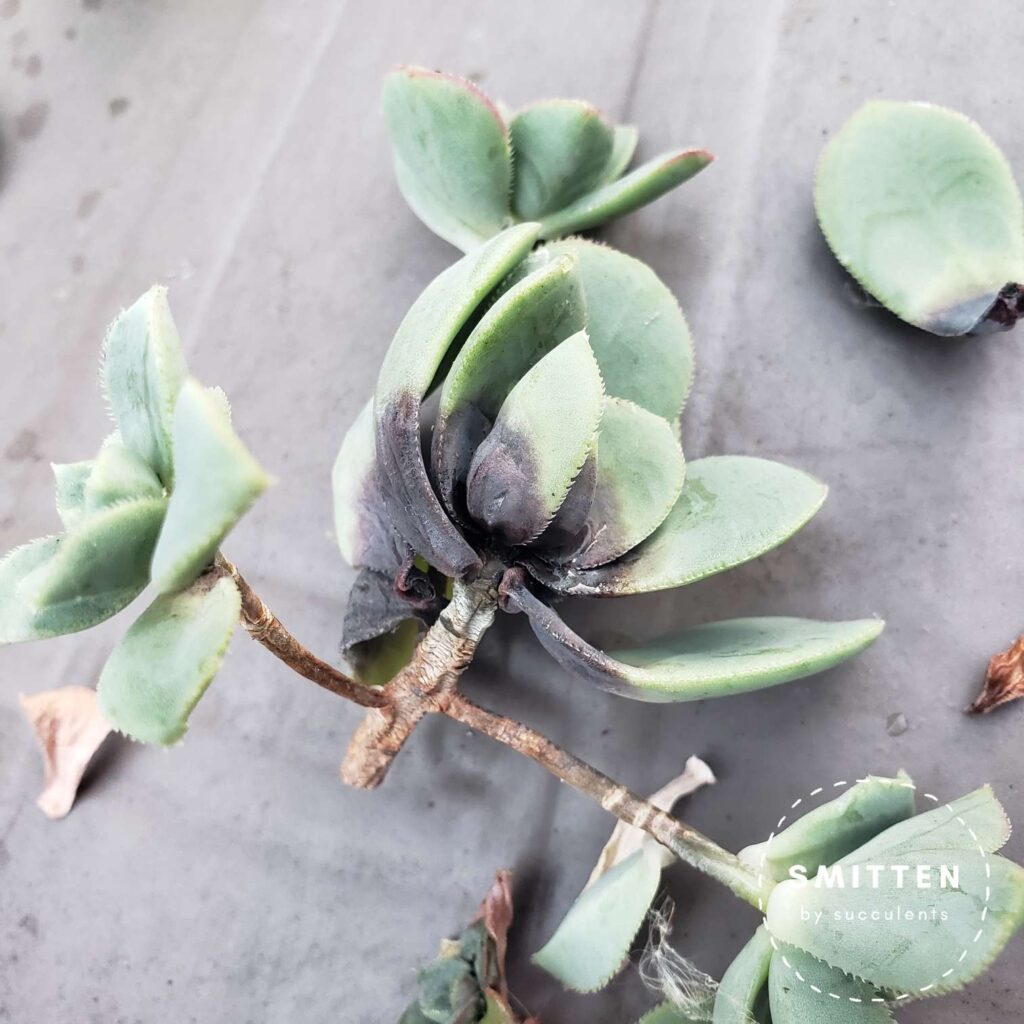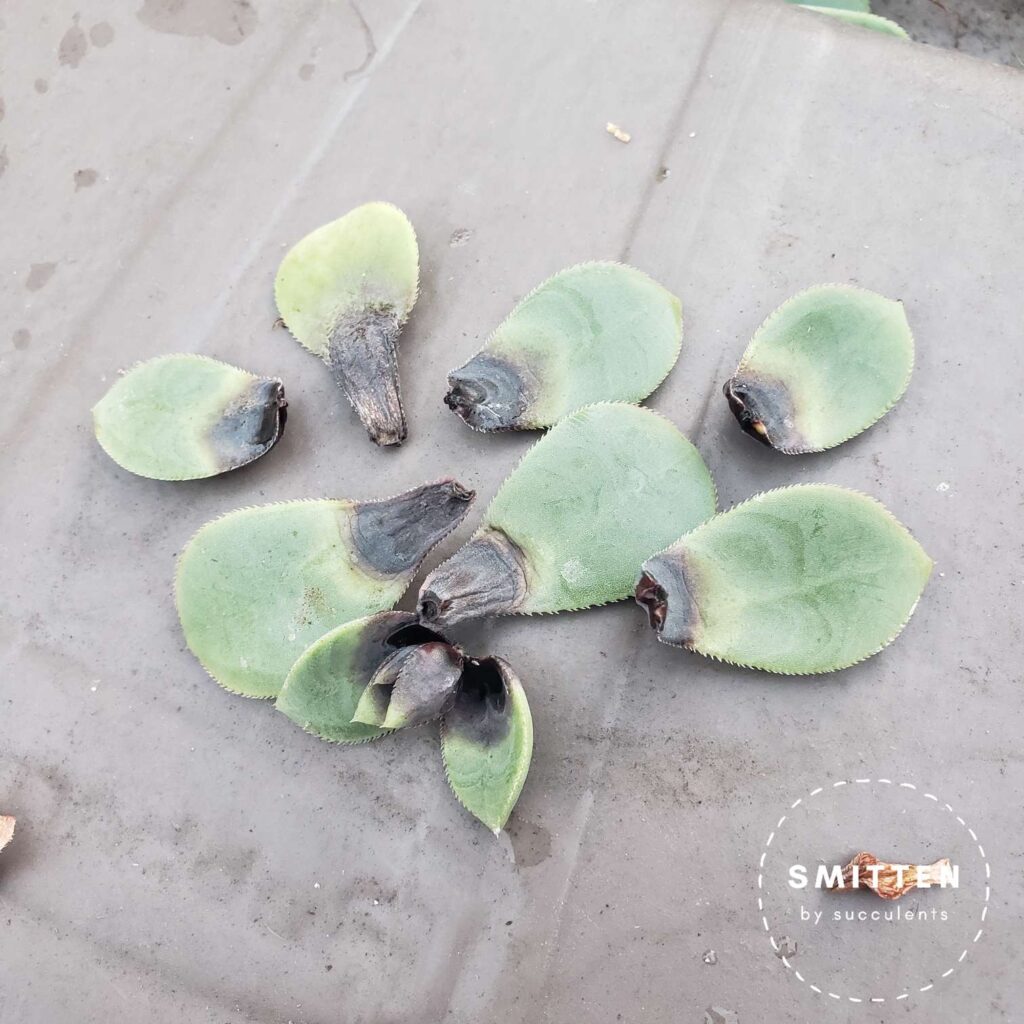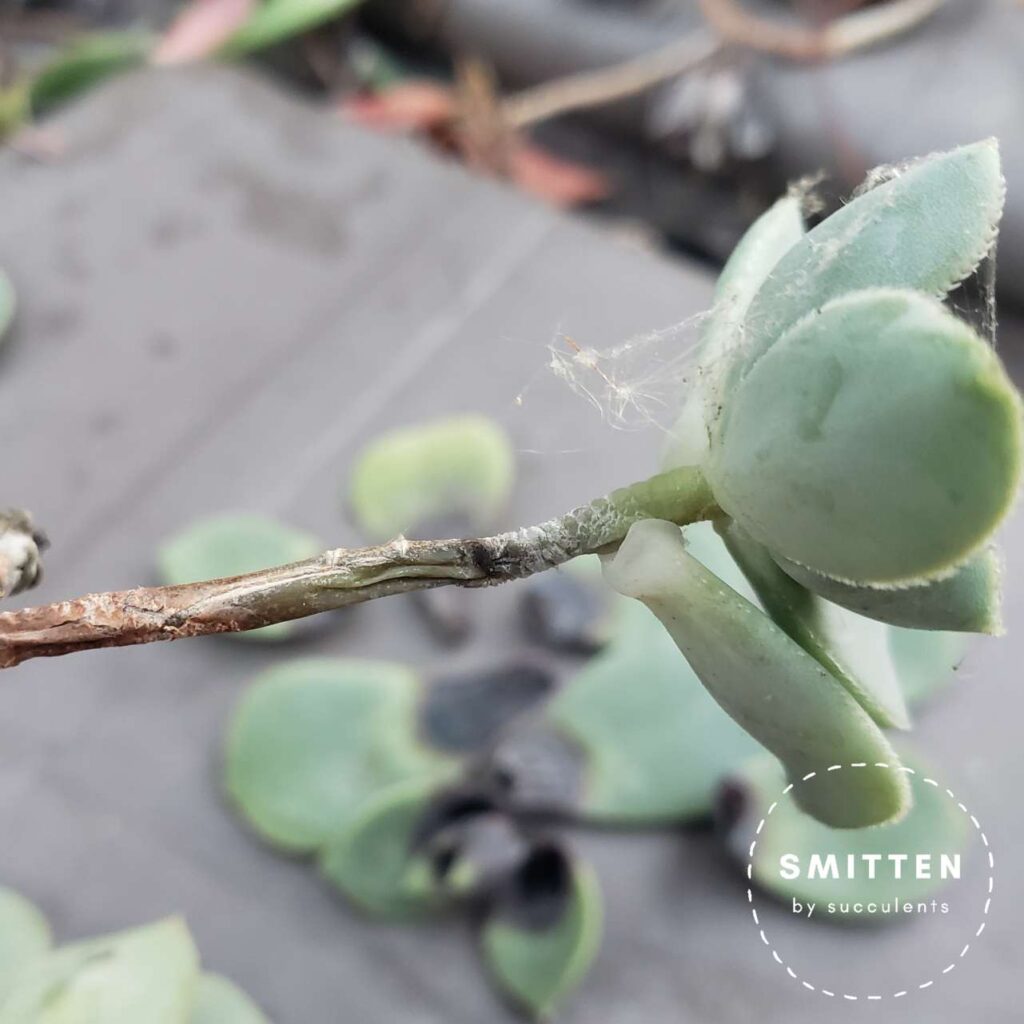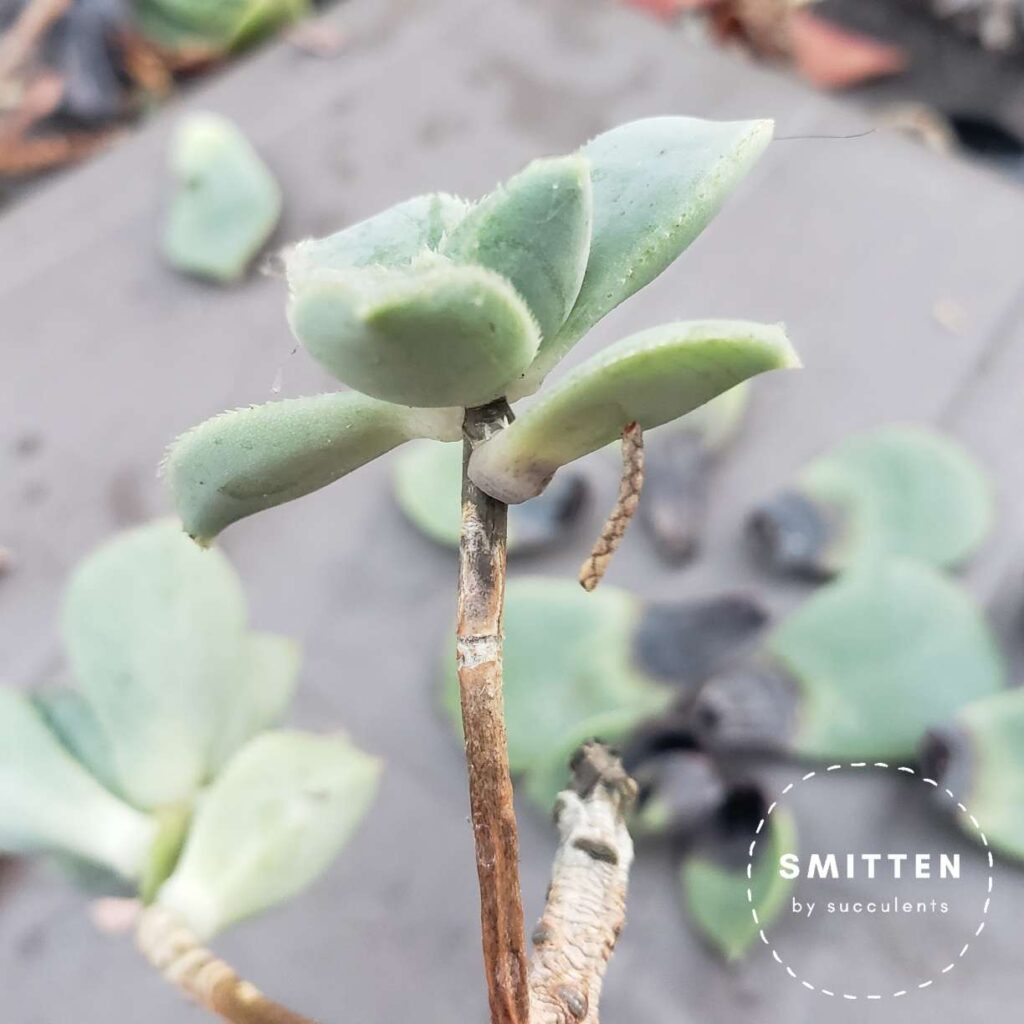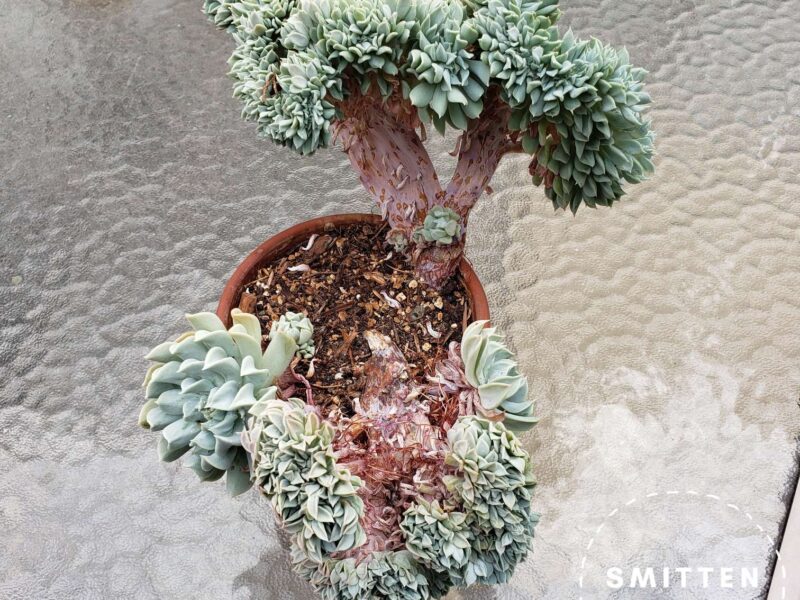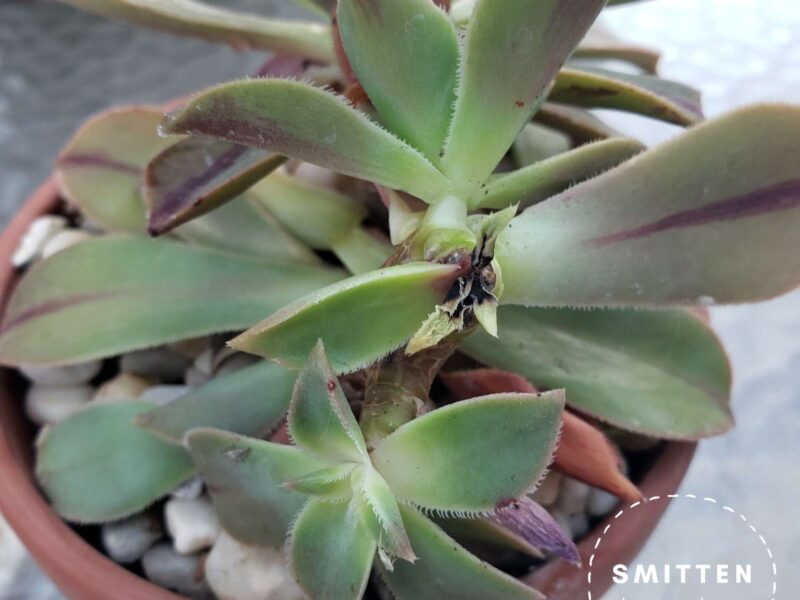This is another edition of identifying and removing rot from a succulent. This time it is Aeonium haworthii (Pinwheel).
For some background, I picked up an Aeonium haworthii plant in the spring off Nextdoor, an app for neighbors. The previous owner told me that it needed to be repotted, but I never got to repotting it.
It’s currently summer. My yard gets a lot of direct sunlight, so a lot of my succulents get sunburned. To help reduce sunburn (fuller leaves are not as easily burned as thin, dehydrated leaves), I have been watering larger plants such as this aeonium weekly. I thought all of my plants were doing great.
So when I saw these aeoniums shriveled up, I thought it must be from sunburn.
Sunburn discolors the leaves and dries them out.
However, today I was doing my weekly watering, and this big aeonium’s rosette was black in the center. That is rot!
I realized the other dried-up aeoniums didn’t succumb to sunburn; they succumbed to rot! I have been overwatering these aeoniums.
I know that aeoniums are dormant during hot months, but I was on autopilot and didn’t realize I was overwatering them.
This rosette brought my attention to the whole plant.
First I decided to cut off the rotted parts. Just in case, I investigated if any rosettes were salvageable.
Signs of Rot
I start from the bottom of the rosette and pluck off the rotted leaves. In this photo, the bottom leaf or the leaf pulled down is rotting where it’s connected to the stem. (There are also some mealybugs).
I continue to pluck leaves off, and you can see that the stem is black. This whole rosette is rotted. This rosette is not salvageable.
I even plucked off a leaf. From the top, it looks “healthy” (besides the mealy bugs), but when you look at the growth point (where the leaf was connected to the stem), it is black. This is rot. Therefore, this leaf is highly unlikely to propagate. It is highly likely to rot, starting from this point.
Here’s another rosette I cut off. Before today’s watering, I did not realize that this was rot. I thought this was sunburn.
I thought it was sunburn because the leaves were discolored and dried up. Plus, the stem that is viewable is not black. However, if I remove the leaves, that’s where the stem is black.
I post this photo because different afflictions can look similar, and the same affliction can look different from succulent to succulent!
Here is the big rosette that made me realize this aeonium was rotting. The rotted leaves just fall off.
The black is the rot on the leaves.
I also inspected the two smaller offshoots from that big rosette, and you can see that even though the leaves look normal, the stem is discolored and/or collapsing.
Why did this plant rot?
In short, this plant rotted because I overwatered it, but what exactly does “overwatered” mean? For this plant, there were 3 things that led to it rotting:
- Aeoniums are dormant during the summer. They are not actively growing, and thus they do not use a lot of water.
- I was watering this pot weekly and not paying attention to its individual needs. This turned out to be too much water for this dormant plant.
- I never repotted it after the previous owner warned me to, and when I looked at the soil, it is a very dense, moisture-retaining soil. It is not well-draining.
Any 1 of these 3 things can lead to any succulent rotting, and I did all 3. This plant was sitting in constantly wet soil while it was dormant. It could not use all that water but it was still absorbing it. My suspicion was that the rot traveled up the stem from the roots and infected the rosettes.
How to save a rotting plant
In my case, since the rot probably came from the roots, the safest thing would be to take cuttings of any healthy-looking rosettes. So I ended up cutting off all the rosettes, separating them from their roots.
I didn’t have time to repot them then, but I plan to replant these rosettes in their own separate pots. Over time they will grow their own new roots.
I will follow up on how this went with a growth progress post.
Have you encountered rot like this? What did you do? Or do you suspect you have a rotting succulent? Let me know if you have any questions in the comments below, and I’ll try to help you out!
